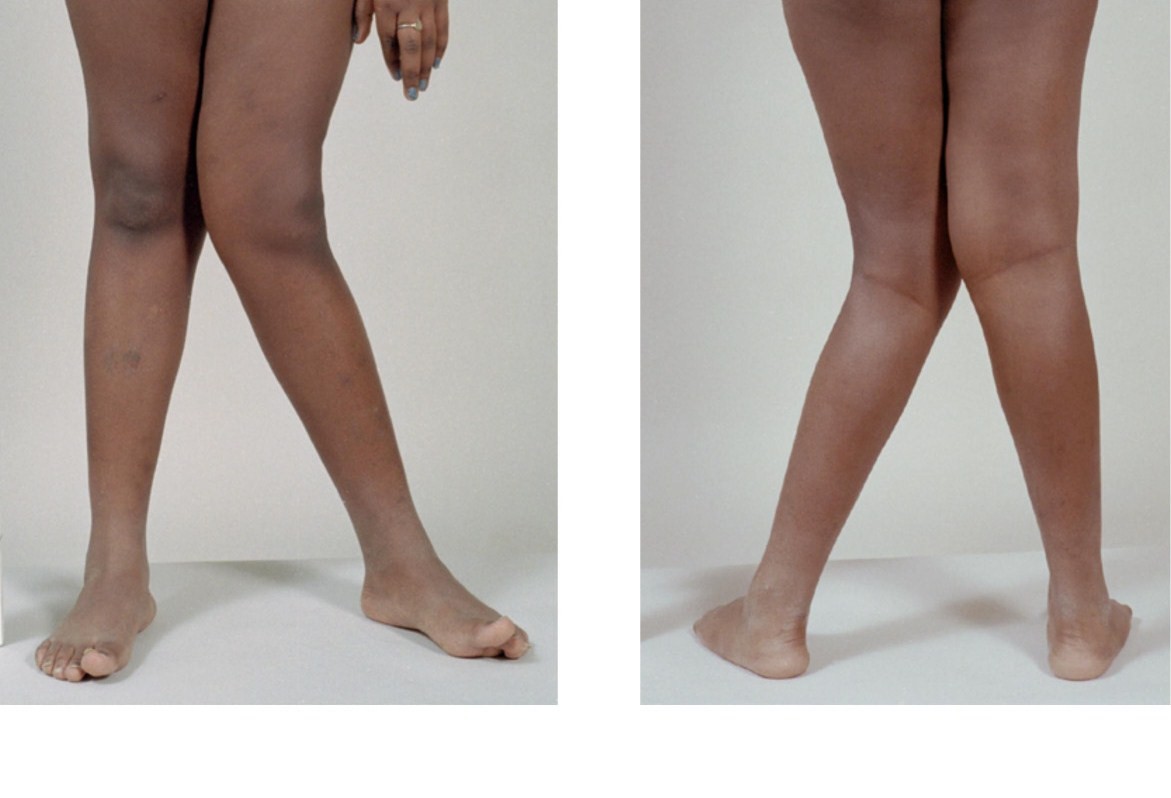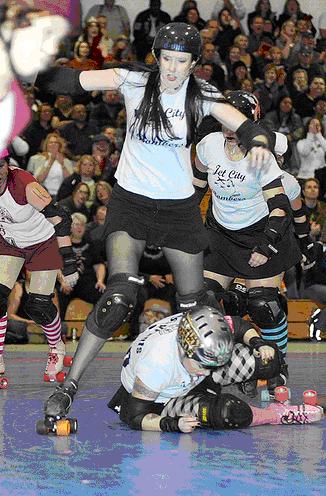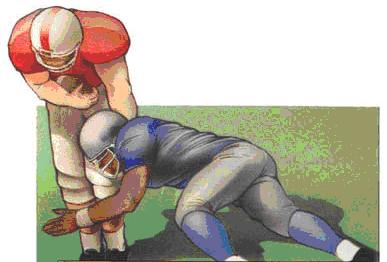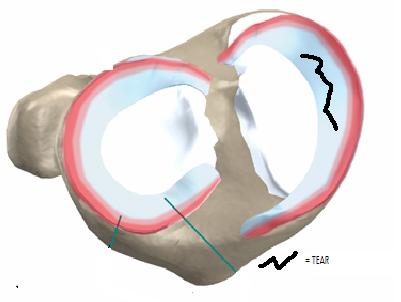The Knee Joint Quiz
(250).jpg)
Hey there! It's time for you to test your knowledge about the human body and parts with this 'knee joint quiz' that is given below. In this quiz, we'll ask you a set of questions related to the knee and if you answer all the questions correctly, you'll be able to score 100% on this quiz. So, are you ready to try this quiz? If yes, then let's start with this quiz quickly. All the best!
- 1.
There are ONLY 2 movements allowed by the knee joint, flexion and extension:
- A.
True
- B.
False
Correct Answer
B. FalseExplanation
Flexion, extension and some rotationRate this question:
-
- 2.
Which of these bones does not contribute to the knee joint?
- A.
Femur
- B.
Tibia
- C.
Fibula
- D.
None of them
Correct Answer
C. FibulaExplanation
The fibula does not contribute to the knee joint. The knee joint is formed by the articulation of the femur (thigh bone) and the tibia (shin bone). The fibula is a smaller bone located next to the tibia, but it does not directly participate in the knee joint. Instead, it mainly functions to provide support and stability to the lower leg.Rate this question:
-
- 3.
This is known as what deformity of the knee?
Correct Answer
VALGUSExplanation
Valgus deformity of the knee refers to a condition where the knee joint deviates outward, causing the lower leg to angle away from the body's midline. In this condition, the knees appear to be "knocked" or "bowed" outward. It is commonly seen in conditions such as osteoarthritis, rheumatoid arthritis, and injury to the ligaments or tendons around the knee joint. The correct answer, "valgus," accurately identifies this particular deformity of the knee.Rate this question:
- 4.
Varus deformity is measured as the distance between:
- A.
The two medial malleoli
- B.
The Knees (intercondylar distance)
- C.
The feet
- D.
The fingers
Correct Answer
B. The Knees (intercondylar distance)Explanation
Varus deformity is a condition where the knees are positioned closer together than normal, resulting in a bow-legged appearance. The measurement of varus deformity is done by assessing the distance between the knees, specifically the intercondylar distance. This measurement helps in diagnosing and evaluating the severity of the deformity, as well as planning appropriate treatment options. Therefore, the correct answer is the knees (intercondylar distance).Rate this question:
-
- 5.
Unhappy triad consists of injury to:
- A.
ACL, Medial Meniscus, MCL
- B.
ACL, PCL, joint capsule
- C.
MCL, LCL, patella tendon
- D.
None of the above
Correct Answer
A. ACL, Medial Meniscus, MCLExplanation
The correct answer is ACL, Medial Meniscus, MCL. The unhappy triad refers to a specific type of knee injury that involves damage to the anterior cruciate ligament (ACL), the medial meniscus, and the medial collateral ligament (MCL). This injury is often caused by a forceful blow to the knee, such as a sudden twisting motion or a direct impact. The combination of these three structures being injured can lead to significant instability and pain in the knee joint.Rate this question:
-
- 6.
This slalam skiier has to quickly keep changing direction to navigate through the course. What is the most likely ligament injury he would suffer with?
- A.
Anterior cruciate
- B.
Posterior Cruciate
- C.
Lateral collateral ligament
- D.
Option 3
- E.
Medial collateral ligament
Correct Answer
A. Anterior cruciateExplanation
The anterior cruciate ligament (ACL) is responsible for stabilizing the knee joint and preventing excessive forward movement of the tibia (shin bone) in relation to the femur (thigh bone). The slalom skier constantly changes direction and relies on quick pivoting movements, which can put significant stress on the ACL. This makes it more susceptible to injury, such as a tear or sprain, due to the sudden shifts in direction and the high forces involved in the sport. Therefore, the most likely ligament injury for this skier would be an anterior cruciate ligament (ACL) injury.Rate this question:
-
- 7.
What is the most likely ligament injury to have occured here?
- A.
Anterior cruciate
- B.
Posterior cruciate
- C.
Medial Collateral
- D.
Lateral collateral
Correct Answer
B. Posterior cruciateExplanation
Based on the given options, the most likely ligament injury to have occurred here is the Posterior cruciate ligament (PCL) injury. The PCL is located at the back of the knee and is responsible for preventing the tibia from sliding too far backward. Injuries to the PCL often occur due to a direct blow to the front of the knee or from a sudden hyperextension. Since the question does not provide any specific details about the injury, we can only speculate that the PCL injury is the most likely based on the given options.Rate this question:
-
- 8.
During this football tackle, the player in blue has collided with the lateral side of the red player's leg. What is the most likely injury to have occured?
- A.
Medial collateral ligament injury
- B.
Lateral collateral ligament injury
- C.
Patella tendon tear
- D.
Anterior cruciate ligament
Correct Answer
A. Medial collateral ligament injuryExplanation
The most likely injury to have occurred in this football tackle is a medial collateral ligament (MCL) injury. The player in blue has collided with the lateral side of the red player's leg, which can cause a forceful inward movement of the knee joint. The MCL is located on the inner side of the knee and is responsible for stabilizing the joint. A collision from the lateral side can cause the MCL to stretch or tear, resulting in an injury.Rate this question:
-
- 9.
Acute management of musculoskeletal injuries can be abbreviated to which of these?
- A.
RICE
- B.
BREAD
- C.
PASTA
- D.
All of the above
Correct Answer
A. RICEExplanation
RICE is an acronym that stands for Rest, Ice, Compression, and Elevation. It is a commonly used method for the acute management of musculoskeletal injuries such as sprains, strains, and bruises. Resting the injured area helps prevent further damage, while applying ice reduces swelling and pain. Compression with a bandage or wrap helps control swelling, and elevating the injured area above heart level also helps reduce swelling. Therefore, RICE is the correct abbreviation for the acute management of musculoskeletal injuries.Rate this question:
-
- 10.
Patella tendonitis is most likely to occur in which of these professionals?
- A.
Basketball player
- B.
Rooflayer
- C.
Tiler
- D.
Wrestlers
Correct Answer
A. Basketball playerExplanation
Patella tendonitis, also known as jumper's knee, is an overuse injury that commonly affects athletes involved in sports that require repetitive jumping and landing, such as basketball. The constant jumping and impact on the knees put basketball players at a higher risk of developing patella tendonitis compared to other professionals listed, such as rooflayers, tilers, or wrestlers, who may not engage in the same level of repetitive jumping and stress on the patella tendon.Rate this question:
-
- 11.
The patient has a tear in their medial meniscus as illustrated on the image. Symptoms are persistent and severely impacting on ADL. How should this be treated?
- A.
Conservative
- B.
Meniscus repair
- C.
Meniscectomy
- D.
None of the above
Correct Answer
C. MeniscectomyExplanation
The tear in the patient's medial meniscus is causing persistent symptoms that severely impact their activities of daily living. In this case, a meniscectomy would be the appropriate treatment. A meniscectomy involves surgically removing the damaged portion of the meniscus to alleviate symptoms and restore normal function. Conservative treatment options may not be effective in this case, and meniscus repair may not be possible depending on the size and location of the tear. Therefore, a meniscectomy is the most suitable treatment option.Rate this question:
-
Quiz Review Timeline +
Our quizzes are rigorously reviewed, monitored and continuously updated by our expert board to maintain accuracy, relevance, and timeliness.
-
Current Version
-
Apr 27, 2023Quiz Edited by
ProProfs Editorial Team -
Dec 06, 2010Quiz Created by
Sdeller
 Back to top
Back to top







